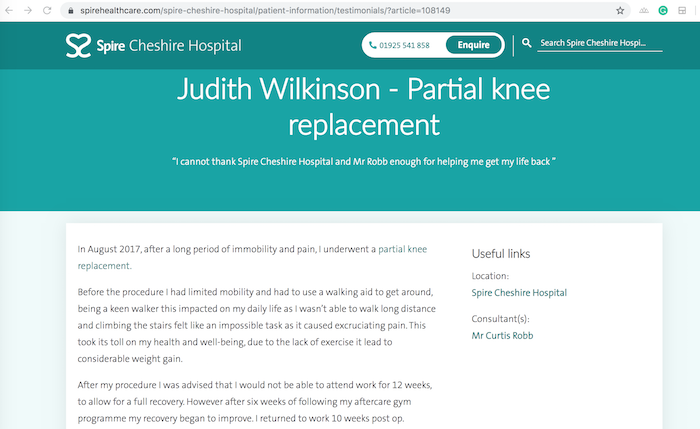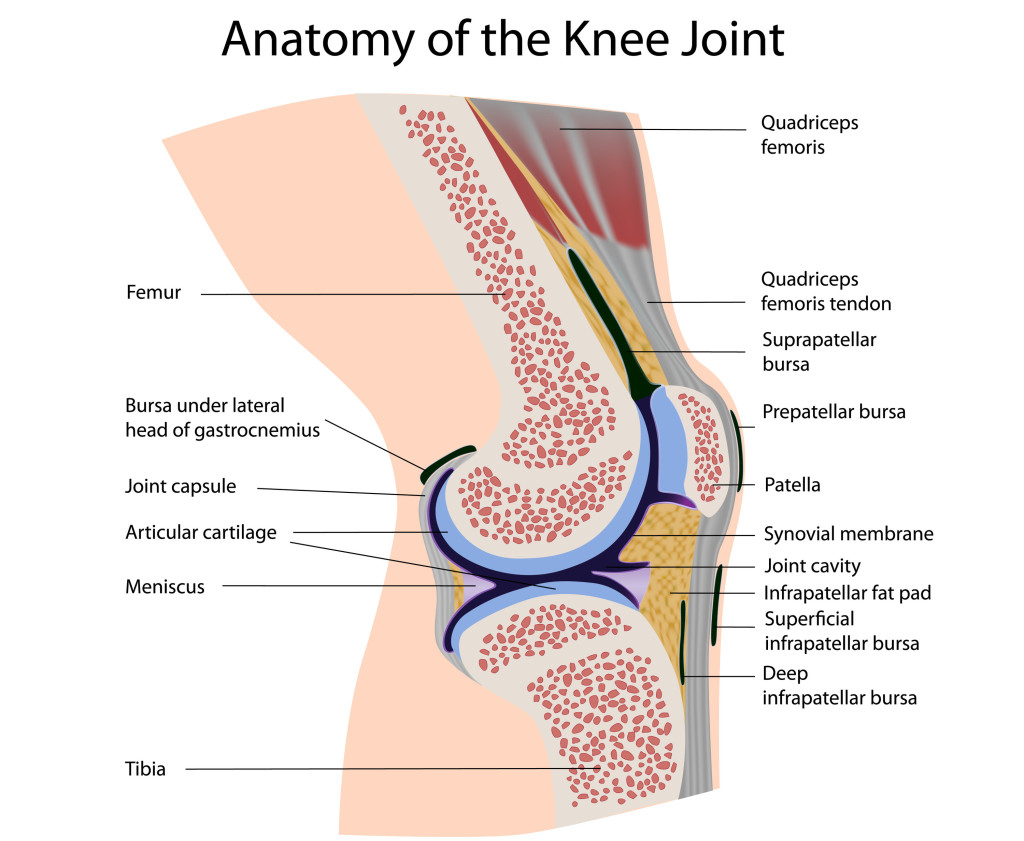8/10/2019 – Partial versus total knee replacements
Which patients are suitable for a partial joint replacement?
It’s known that up to 48% of patients coming for knee replacement are suitable for a partial rather than a full knee replacement. (1) Unfortunately, in the UK not all patients are given the opportunity for partial joint replacement and undergo a total joint replacement instead. Currently only 10% of patients who undergo a knee replacement have a partial (2).
In a comprehensive summary on the publications of partial and total knee replacement, patients have a better outcome with a partial knee replacement (3). This fits in with our previous published findings and our current evaluation on the outcome of partial joint replacement compared to total (4).
Even with the aid of modern technological advancement such as robotic surgery or the iASSIST the outcome of partial joint replacement is better than total.
Why have a partial rather than total knee replacement?
Better function
Better range of movement
Faster recovery
Safer surgery
Less surgery
Less chance of infection
Less chance of deep vein thrombosis
Less anaesthetic time
And….
Patients who have a partial knee replacement are also more likely to choose to have the operation again – 91% (partial) versus 84% (total) (5).
References
- Willis-Owen, C. A., Brust. K., Alsop. H., Miraldo. M., Cobb. J.P. (2009). Unicondylar knee arthroplasty in the UK National Health Service: An analysis of candidacy, outcome and cost efficacy. The Knee, 16(6): 473-8.
- The National Joint Registry; 15th Annual Report.
- Wilson et al. (2019). Patient relevant outcomes of unicompartmental versus total knee replacement: systematic review and meta-analysis. British Medical Journal.
- Matharu et al. (2014). An analysis of Oxford hip and knee scores following primary hip and knee replacement performed at a specialist centre. The Bone and Joint Journal.
- Beard et al. (2019). The clinical and cost-effectiveness of total versus partial knee replacement in patients with medial compartment osteoarthritis (TOPKAT): 5-year outcomes of a randomised controlled trial. The Lancet. 2019.
31/3/2018 – Vitamin D
In my orthopaedic practice I commonly find patients are vitamin D deficient. This is not good for healthy bones and can give rise to leg and back pain.
I’ve tested the vitamin D levels in many of my patients and very frequently it is not adequate enough.
As prevention is better than cure, here is a low down on why it is important not to neglect your level vitamin D.
Why do you need vitamin D?
Vitamin D is required for a variety of body functions including;
Healthy bones and teeth
Muscle function and strength
Immune function
It may also have beneficial effects to;
Reduce your risk of death (when taken with calcium)
Reduce your risk of respiratory infections
What role does vitamin D play for bones?
It’s primary function is to increase calcium, magnesium and phosphate from the intestine.
Calcium phosphate is the mineral that forms the main component of bone.
Lack of calcium and phosphate (most commonly because of vitamin D deficiency) causes osteomalacia (soft bones). When this occurs in children who are still growing the osteomalacia is called rickets (soft deformed bones).
What symptoms might you have if your vitamin D is low?
You may have none initially. I see patients with vitamin D deficiency who have back, lower limb or bone pain but the symptoms of a lack of vitamin D are vague and most patients are not aware they have a problem that they can specify. It can also make patients feel lethargic with a lack of energy.
Why might it be low?
The reasons for a lack of vitamin D are that it is not easy in the UK to obtain optimal levels in the body naturally. Unless you live south of Sicily, nearer the equator, you will not obtain enough vitamin D from sunlight in the winter months.
Vitamin D is produced in the skin from ultraviolet B rays of sunlight, which in the UK is often hard to find even during the summer. This coupled with an increased use of sunscreen means the general population commonly don’t get the amount that they need.
Vitamin D is a fat-soluble vitamin and studies have shown patients with a higher body mass index and increased body fat are more susceptible to deficiency.
Dietary sources are meagre. Some foods do contain vitamin D such as egg yolk and oily fish e.g. salmon and mackerel and it is also found in mushrooms exposed to sunlight (mushrooms are normally grown in the dark commercially but the vitamin D levels can be increased by exposure of the mushrooms to sunshine prior to eating).
Nevertheless, consuming enough vitamin D by dietary methods to satisfy the body’s requirements is difficult.
So what can I do?
1) Exposure to sunlight safely
10 minutes exposure of arms and legs in direct sunlight (without sunscreen) between the hours of 10am and 3pm per day is sufficient. This is only adequate between April to September in the UK.
2) Eat vitamin D rich foods
3) Take a supplement -especially if in the following high-risk groups;
Pregnancy
Children
Adults
Elderly (over the age of 65 it is harder to absorb the amount of vitamin D required)
People with certain chronic illnesses such as Crohns/Coeliac disease
People from ethnic minorities who have darker skin
What supplement should I take?
Pregnancy 400 IU (10mcg) throughout the year
Children 400 IU (10mcg) throughout the year
Adults 400 IU (10mcg) throughout the year
As per the Scientific Advisory Committee on Nutrition 2016
If you are concerned you could be vitamin D deficient what can you do?
See your GP if you feel you are having symptoms suggestive of vitamin D deficiency.
Your GP can organise a blood test as in some cases if your levels of vitamin D are too low you will need extra vitamin D supplements – but this needs to be given under your doctor’s supervision.


